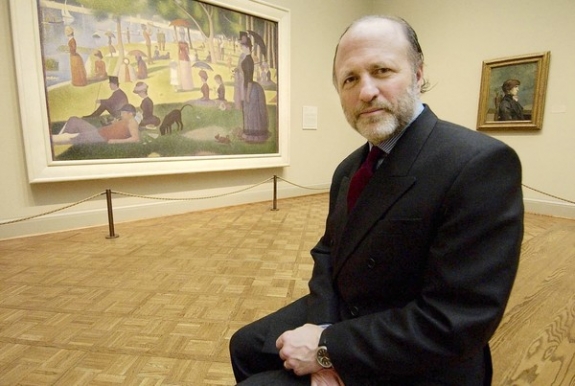James Cuno, director of the Art Institute of Chicago, was named president and chief executive of the J. Paul Getty Trust, taking over the world's wealthiest arts organization, with a $5.3-billion endowment and $250-million annual budget, but one that has suffered management turnover in recent years.
Cuno, 60, has led the Art Institute through its most ambitious expansion in its 130-year history. He will take over the vast Getty Trust, which consists not just of the museum — its most public face — but a grant-making foundation, a conservation institute and a scholarly institute.
The Getty has been without a museum director since January 2010, when Michael Brand resigned, and without a head of the trust since James Wood's death last June. Wood was hired in 2006 to turn the organization around after Barry Munitz was forced to retire because of a scandal over his leadership and spending and a curator faced charges of trafficking in looted antiquities.
Word of Cuno's hiring met with a mixed response. "It's not a surprising appointment by any means but a very gratifying appointment," says Hugh Davies, director of the Museum of Contemporary Art San Diego, calling Cuno a "seasoned" museum leader. "They came to the right conclusion and got the best person for the job."
But several art-world figures did express surprise at the appointment.
Some wonder what Cuno's hire means for the Getty's increasingly aggressive stance against the looting of antiquities, since Cuno is one of the few museum leaders known to speak out against cultural patrimony laws. He argues that some antiquities are best served in encyclopedic museum collections, not necessarily back in their countries of origin. In short, will his hire affect either the Getty's commitment to return antiquities or its reputation internationally?
Others have criticized the Getty for not taking this opportunity to combine the job leading the Trust with the job leading the museum. Under the Getty's unusual management structure, the museum director reports to the trust president. And Brand left following clashes with Wood.
Art+Auction magazine editor Benjamin Genocchio quickly posted an editorial online criticizing that organizational structure. "So why would the Getty board have chosen to replicate the same disastrous management structure — to hire another veteran museum director (from the same Chicago institution, no less) to be its president, who in turn will have to choose a museum director to work for him?" Genocchio called it "a perfect recipe for internal conflict and tension."
"I obviously don't think this needs to be the case," replied Cuno, who had not seen the editorial but was familiar with the criticism. He says hiring a director will be "a very high priority."
Until recently, "I never directly reported to the board myself but to a president of a university. I understand the culture of the university and the benefits of delegating responsibility. I am not a micromanager or someone who needs to be involved in every decision."
Getty board Chair Mark Siegel also defended the existing management structure, noting that the board had a "serious discussion" on whether to modify it after Wood's death but decided not to. "The Getty's museums are an important part of our program. But we also have three other programs inside the Getty Trust that we don't think of as subsidiary to the museum, that stand in their own right as important, wonderful contributions," he says. "We don't want them to become offshoots of the museum."
Cuno's scholarly pedigree and managerial experience are not in question. As Davies puts it, "He's an ideal combination of somebody with impeccable scholarly credentials and extensive international experience."
With an M.A. and PhD in art history from Harvard, Cuno made his name in the museum world as a scholar-curator. An expert in 18th and 19th century French printmaking, he has written extensively on subjects like the French Revolution and French caricature.
Most of his jobs early on were at major universities. In the mid-1980s, he was the director of the Grunwald Center for the Graphic Arts at UCLA. He later served as director of the Hood Museum of Art at Dartmouth College from 1989 to 1991 and director of the Harvard Art Museums for the following decade. After a brief stint as head of the Courtauld Institute in London, he took the job at the Art Institute of Chicago in 2004 — a job previously held by Wood, also his Getty predecessor.



